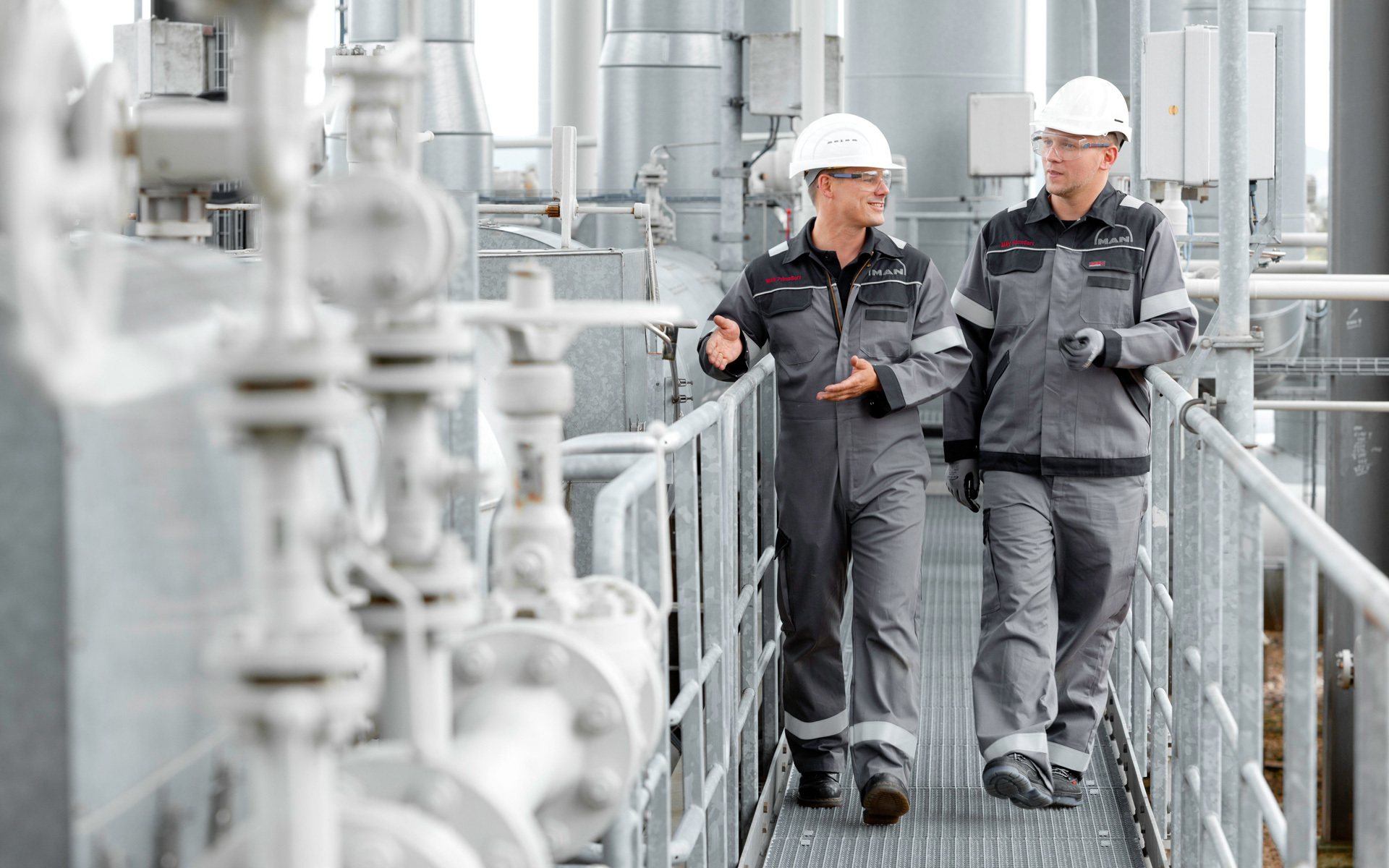Gravity base consists of enormous
concrete fixed structures placed on the
bottom, typically with oil storage cells in
a "skirt" that rests on the sea bottom.
The large deck receives all parts of the
process and utilities in large modules.
Large fields at 100 to 500 meters of
water depth were typical in the 1980s
and 1990s. The concrete was poured at
an onshore location, with enough air in
the storage cells to keep the structure
floating until tow-out and lowering onto
the seabed. The picture shows the
world's largest GBS platform, Troll A,
during construction. Photo Statoil
Compliant towers are much like fixed
platforms. They consist of a narrow
tower, attached to a foundation on the
seafloor and extending up to the
platform. This tower is flexible, as
opposed to the relatively rigid legs of a
fixed platform. Flexibility allows it to operate in much deeper water, as it can
absorb much of the pressure exerted by the wind and sea. Compliant towers
are used between 500 and 1,000 meters of water depth.
Floating production, where all topside systems are located on a floating
structure with dry or subsea wells. Some floaters are:
10
FPSO: Floating Production,
Storage and Offloading. Their
main advantage is that they are a
standalone structure that does not
need external infrastructure such
as pipelines or storage. Crude oil
is offloaded to a shuttle tanker at
regular intervals,
from days to
weeks, depending on production
and storage capacity. FPSOs
currently produce from around
10,000 to 200,000 barrels per day.
An FPSO is typically a tanker type
hull or barge, often converted from
an existing crude oil tanker (VLCC
or ULCC). Due to the increasing
sea depth for new fields, they
dominate new offshore field
development at more than 100
meters water depth.
The wellheads or subsea risers
from the sea bottom are located
on a central or bow-mounted
turret, so that the ship can rotate
freely to point into wind, waves or
current. The turret has wire rope
and chain connections to several
anchors (position mooring -
POSMOOR), or it can be
dynamically positioned using
thrusters (dynamic positioning –
DYNPOS). Most installations use
subsea wells. The main process is
placed on the deck, while the hull
is used for storage and offloading
to a shuttle tanker. It may also be
used for the transportation of
pipelines.
FPSOs with additional processing
and systems, such as drilling and
production and stranded gas LNG
production are planned.
11
A variation of the FPSO is the Sevan Marine design. This uses a circular hull
which shows the same profile to wind, waves and current, regardless of
direction. It shares many of the characteristics of the ship-shaped FPSO,
such as high storage capacity and deck load, but does not rotate and
therefore does not need a rotating turret. Photo: Sevan Marine
Tension Leg Platform (TLP –
left side in picture) consists of
a structure held in place by
vertical tendons connected to
the sea floor by pile-secured
templates. The structure is
held in a fixed position by
tensioned tendons, which
provide for use of the TLP in a
broad water depth range up to
about 2,000m. The tendons
are constructed as hollow high
tensile strength steel pipes that
carry the spare buoyancy of
the structure and ensure
limited vertical motion.
Semi-submersible platforms
(front of picture) have a similar
design but without taut
mooring. This permits more
lateral and vertical motion and
is generally used with flexible
risers and subsea wells.
Similarly, Seastar platforms are
miniature floating tension leg
platforms, much like the semisubmersible type, with
tensioned tendons.
SPAR consists of a single tall
floating cylindrical hull,
supporting a fixed deck. The
cylinder does not, however,
extend all the way to the
seabed. Rather, it is tethered to
the bottom by a series of cables and lines. The large cylinder serves to
stabilize the platform in the water, and allows for movement to absorb the
force of potential hurricanes. SPARs can be quite large and are used for
12
water depths from 300 up to 3,000 meters. SPAR is not an acronym, and is
named for its resemblance to a ship's spar. SPARs can support dry
completion wells, but are more often used with subsea wells







0 Comments